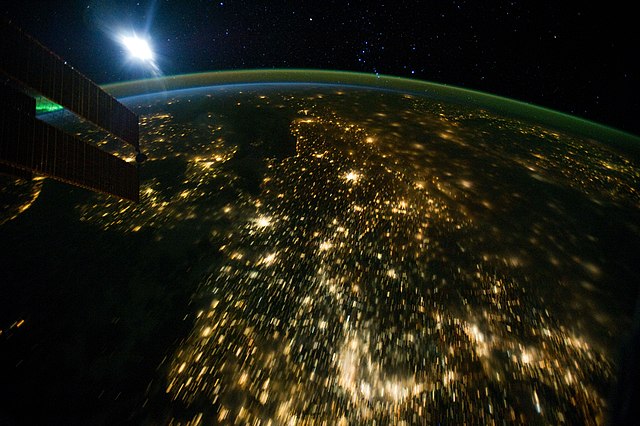
Dark Sky Week
Interesting Space Facts For Dark Sky Week
This week is International Dark Sky Week. Research shows that more than 80 percent of the world and more than 99 percent of the U.S. and European populations live under light-polluted skies. The aim of the dark sky movement is to bring better lighting to communities around the world so that all life can thrive.
Light Pollution’s Impact On Nature And Us
The impact of light skies and artificial light at night time has negative effects on many creatures including amphibians, birds, insects, mammals and plants. It has impacts on humans too, as light at night can lower melatonin production, which can lead to stress and anxiety, headaches, sleep deprivation and other health problems.
When it comes to astronomy, the darker the sky the more chance of being able to spot distant planets in our solar system. Here are some interesting space facts for International Dark Sky Week.
Why So Quiet?
Space is completely silent. This is because there is no air or atmosphere in space. There is no sound because it is a near perfect vacuum (devoid of matter), and sound waves have no medium to travel through.
Light Stats
The Sun is one of more than 100 billion stars in the Milky Way and more than a million Earths would fit inside the sun. It is made up of 74% hydrogen and 24% helium as well as are carbon, oxygen, neon, and iron. At earth’s orbit, for each square meter, our sun puts out 127,000 lumens. By comparison, there are around 800 lumens in a 60-watt lightbulb. That’s bright!
Sunspots
One interesting aspect of the Sun is its sunspots. Sunspots are areas where the magnetic field is about 2,500 times stronger than Earth’s, much higher than anywhere else on the Sun. Each 11 years the Sun’s magnetic cycle goes into overdrive. This is known as solar maximum, a cycle where the Sun’s magnetic poles flip. The next solar maximum is expected in July 2025, with a peak of 115 sunspots.
A Rapid-Fire Year On Venus
A year goes by fast on Venus. Venus spins very slowly in the opposite direction of Earth — it takes 243 Earth days to fully rotate. It takes 225 days to go around the sun because it is so close to it. This means that a year on Venus is shorter than a day on Earth. The average temperature on Venus is more than 480 degrees Celsius (about 900 degrees Fahrenheit).
Martian Gravity
According to NASA, the gravity on Mars is approximately one-third that on Earth. This means your weight would be lower if you were on Mars. Sunsets on Mars are blue, because the Martian atmosphere filters out the redder wavelengths.
Storms On Neptune
The winds are wild on Neptune. They are the fastest in the solar system, reaching lightning 2,575 kilometres per hour (1,600 miles per hour). Neptune’s giant, spinning storms are large enough to swallow the whole Earth.
The Many Moons Of Jupiter
Jupiter’s diameter is 11.2 times larger than Earth and is believed to have a total of 92 Moons. Ganymede, or Jupiter III, is the largest and most massive natural satellite of Jupiter as well as in the Solar System, being a planetary-mass moon. This is a planetary body that is also a natural satellite. Ganymede is larger than the planet Mercury.
To celebrate International Dark Sky Week, why not head outside at night for a spot of stargazing to see which planets you can spot? To find out more, visit the International Dark Sky Week website.